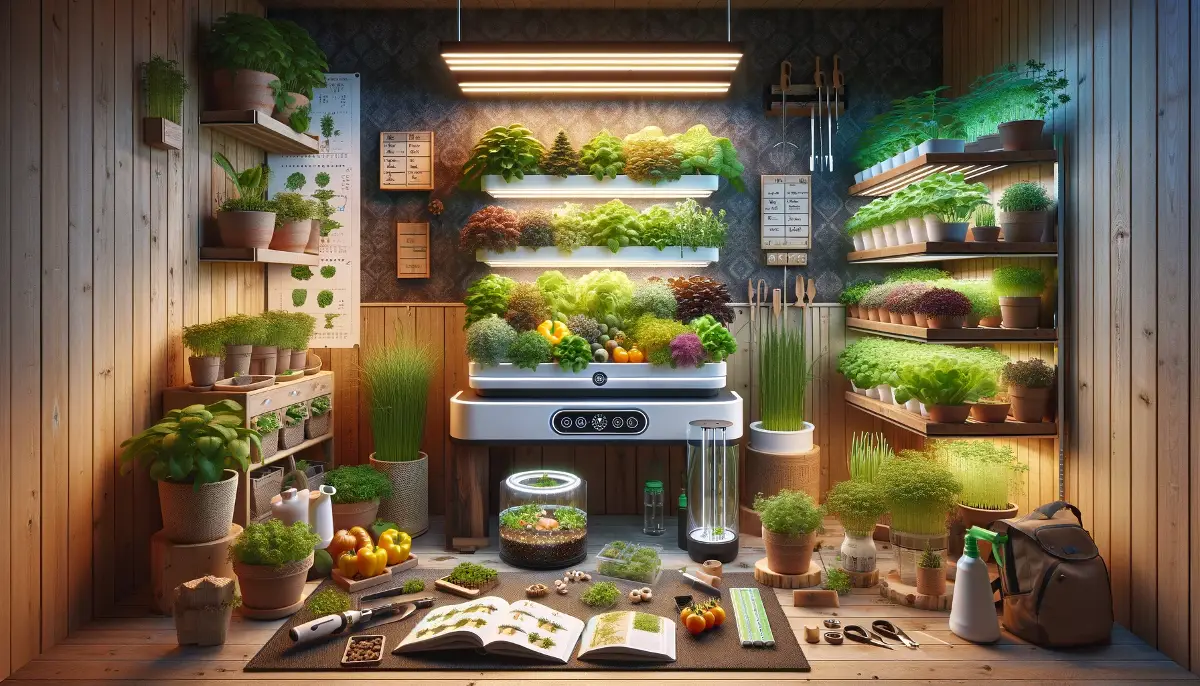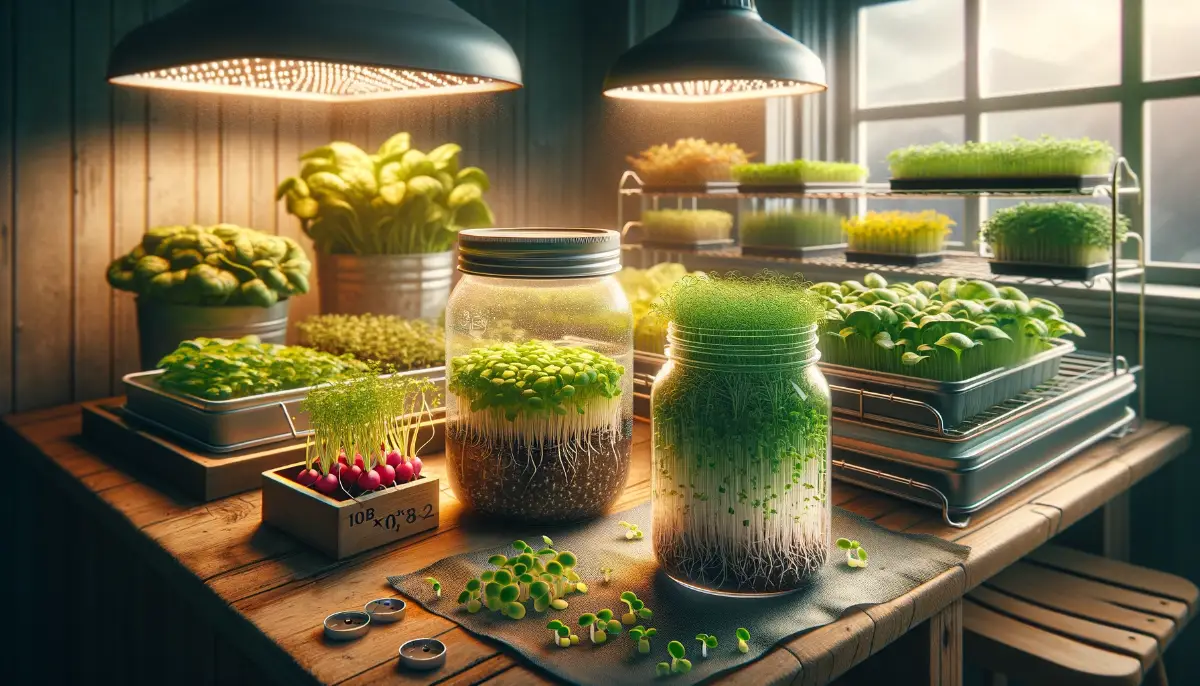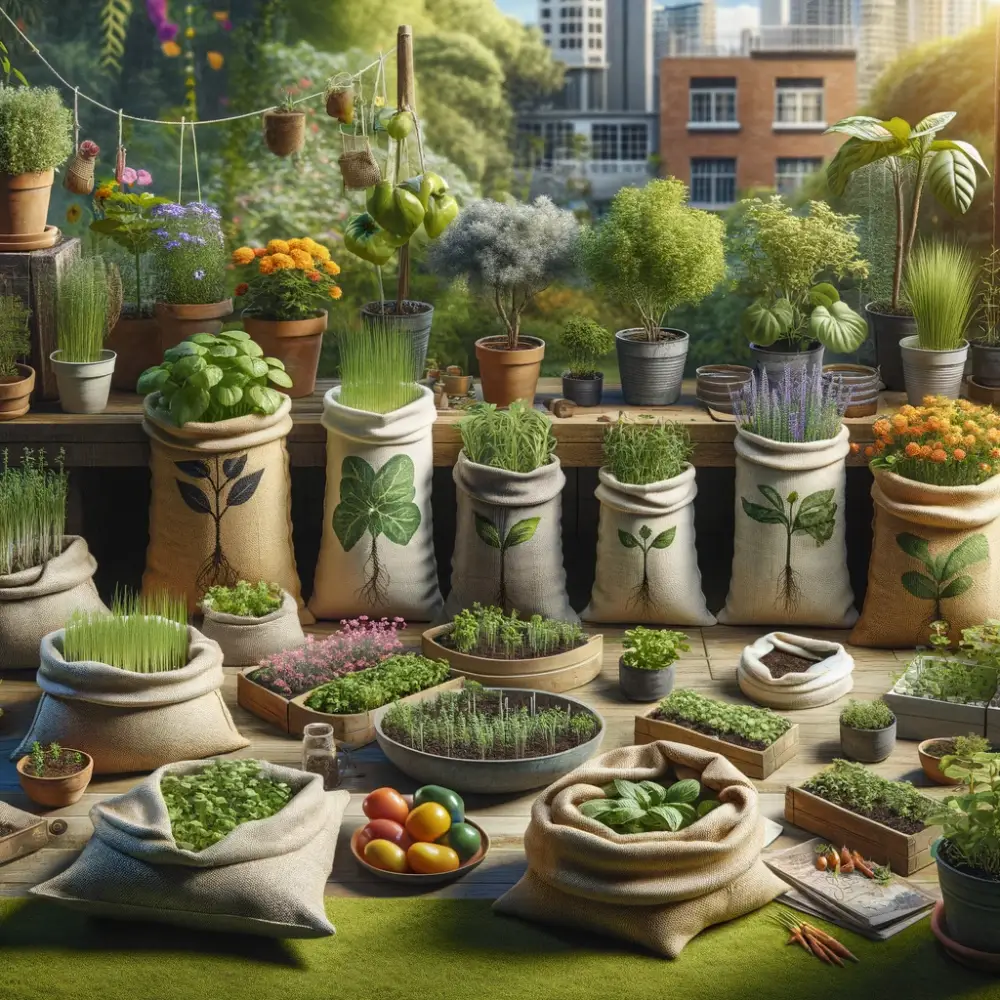Have you ever dreamed of growing your own food, free from pesticides, right in the comfort of your home? Maybe you’re tired of spending a small fortune on organic produce at the grocery store, or you simply want to brighten up your living space with fresh, thriving greenery. Whatever the reason, diving into organic indoor gardening is a game-changer!
With so many systems available, choosing the right one can feel overwhelming. This guide will walk you through everything you need to know, with practical tips, relatable examples, and all the inspiration you need to start growing today.
🌿 Organic indoor gardening is a sustainable, chemical-free way to grow plants indoors year-round.
🌟 Choosing the right system depends on your space, budget, and gardening goals.
💡 Options like hydroponics, aquaponics, and container gardening cater to different preferences.
🏡 Even small spaces can be transformed into lush, productive gardens with the right system.
What Is Organic Indoor Gardening?
Organic indoor gardening is the practice of growing plants indoors using natural, chemical-free methods. Whether it’s herbs on a windowsill, vegetables in a hydroponic setup, or a full aquaponic system, the goal is the same: fresh, sustainable produce at your fingertips.
Why It’s Worth Your Time
- You control what goes into your plants—no pesticides or synthetic fertilizers.
- It’s perfect for city dwellers with no outdoor garden space.
- Gardening has been shown to reduce stress and boost mental health.
- The joy of picking your own fresh basil or crisp lettuce? Priceless.
The Different Types of Organic Indoor Gardening Systems
Not all gardening systems are created equal. Each has unique features, benefits, and challenges. Let’s break them down so you can find your perfect match.
👉 1. Hydroponic Systems
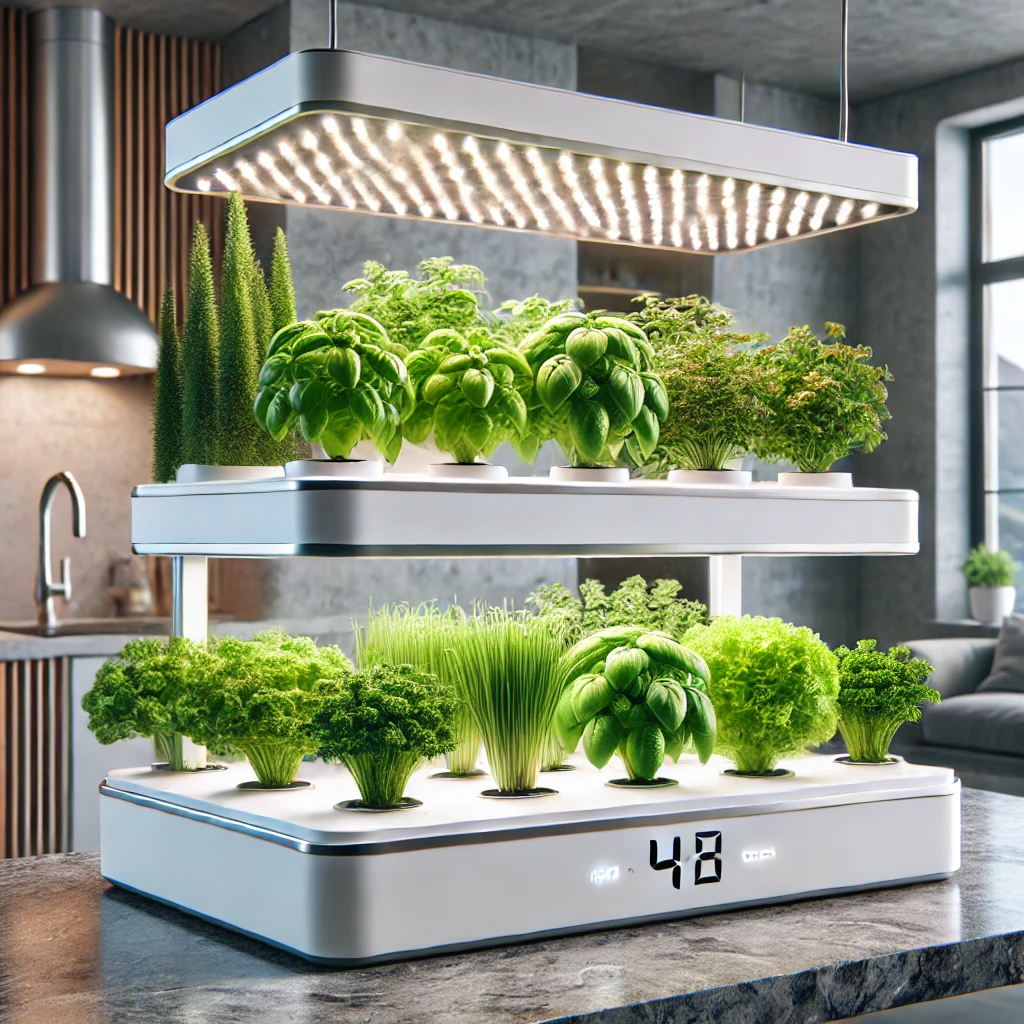
Hydroponics involves growing plants without soil. Instead, their roots are submerged in a nutrient-rich water solution. This method is clean, efficient, and ideal for small spaces.
Popular Options:
- AeroGarden: A plug-and-play system perfect for beginners.
- Veritable Smart Indoor Grow System: Sleek, automated, and highly efficient.
Benefits:
- Plants grow up to 50% faster than in soil.
- Requires less water than traditional gardening.
- Minimal mess—no dirt involved!
Imagine harvesting fresh herbs for dinner just weeks after planting, all from a compact unit sitting on your kitchen counter.
👉 2. Aquaponic Systems
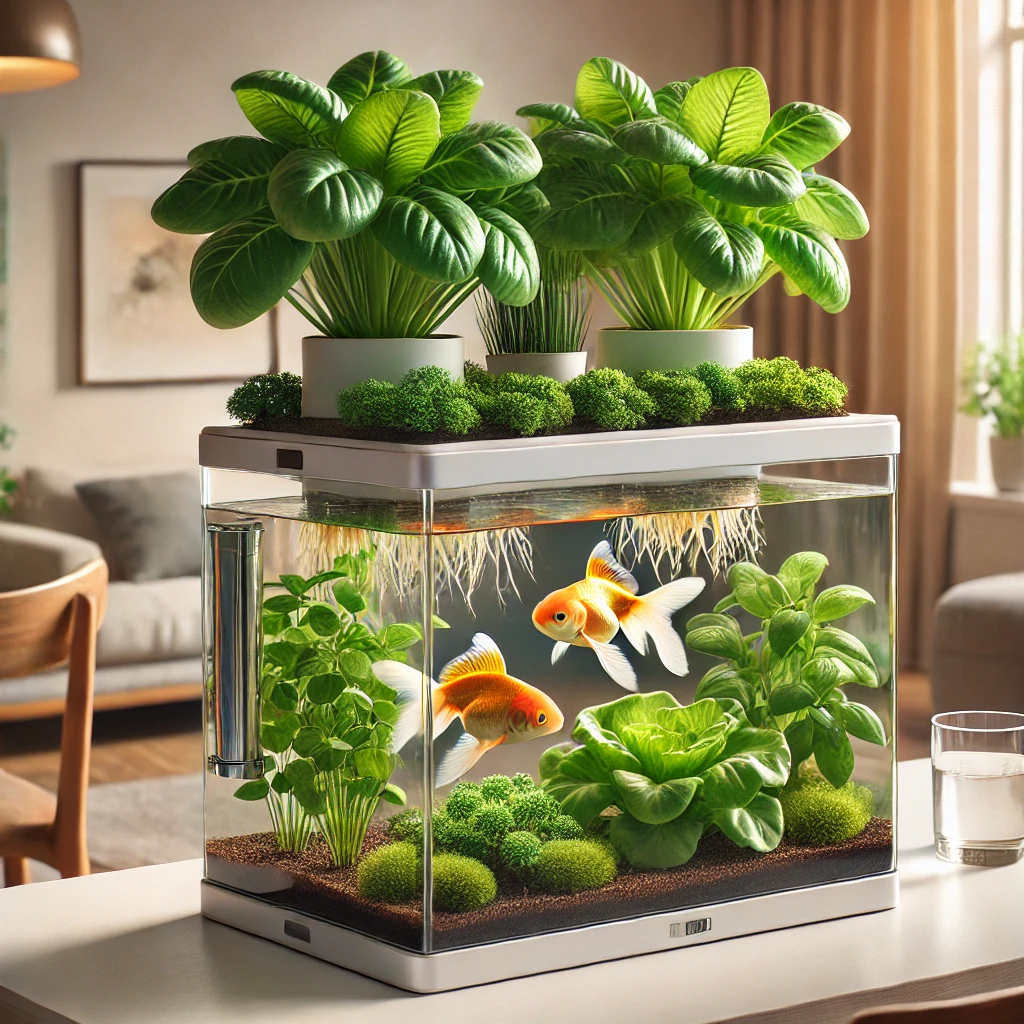
Aquaponics takes hydroponics to the next level by adding fish into the equation. Fish waste provides natural nutrients for plants, and the plants clean the water for the fish. It’s a beautiful cycle of sustainability!
Popular Option:
- Ecolife ECO-Cycle Aquaponics System: Compact, beginner-friendly, and eco-conscious.
Benefits:
- Combines plant growth with raising fish like tilapia or goldfish.
- Completely organic and sustainable.
- Fun to watch and educational for families.
👉 3. Container Gardening
The classic choice! Container gardening uses pots or planters filled with organic soil to grow your plants. It’s versatile, low-maintenance, and perfect for beginners.
Popular Options:
- Terracotta pots for a timeless look.
- Fabric grow bags for excellent root aeration.
Benefits:
- Great for herbs, flowers, and small vegetables.
- Can be customized to any space or decor.
- Ideal for those who love the tactile feel of soil.
Place a few small pots of parsley, thyme, and mint on a sunny windowsill, and you’ve got your very own indoor herb garden!
Benefits of Organic Indoor Gardening
Sustainability: Uses fewer natural resources like water. Eliminates harmful pesticides and fertilizers.
Year-Round Growing: No more waiting for the perfect season. Grow fresh produce even in the dead of winter.
Perfect for Small Spaces: Many systems are compact and vertical, making them ideal for apartments.
Health Benefits: Gardening is a stress-reliever and mood booster. Fresh, organic produce at your fingertips promotes a healthier diet.
Getting Started: Step-by-Step Guide
Starting your indoor garden is easier than you think. Here’s how to do it like a pro.
1. Choose Your System
- Small spaces? Go for hydroponics or compact container gardening.
- Want fish and plants? Try aquaponics.
- Looking for simplicity? Container gardening is your best bet.
2. Get the Right Lighting
Natural light is ideal, but if your home lacks it:
- Use LED grow lights to mimic sunlight.
- Position lights about 12 inches above plants for optimal growth.
3. Select Your Plants
Start with low-maintenance options like:
- Herbs: Basil, cilantro, mint.
- Leafy greens: Lettuce, spinach, kale.
- Easy veggies: Cherry tomatoes, peppers.
4. Prepare Your Growing Medium
- For hydroponics: Use rockwool or clay pebbles.
- For soil-based gardening: Mix organic potting soil with compost.
5. Add Nutrients
- Hydroponic systems: Use organic nutrient solutions.
- Soil gardening: Incorporate compost or organic fertilizer.
Maintaining Your Indoor Garden: My Best Advice 🌱
Keeping your indoor garden thriving is all about showing it a little love. Here are some practical tips that’ll make a big difference in keeping your plants healthy and happy:
👉 Prune and Harvest Regularly
Think of pruning as giving your plants a haircut—it keeps them looking sharp and growing strong. Snip off any dead or yellowing leaves; they’re not doing your plant any favors and might even invite pests.
When it comes to herbs, don’t be shy about harvesting. The more you clip, the more they’ll grow. Use those fresh basil leaves for dinner tonight—you’re doing your plant a favor by keeping it productive!
👉 Keep It Clean
Hydroponic systems can get a little grimy over time, so make sure you clean everything between growing cycles. It’s like giving your garden a fresh start. Use organic cleaners (or a simple vinegar solution) to avoid leaving any chemical residues.
For soil-based gardens, check your pots for buildup, and give them a quick scrub if needed. Trust me, clean equipment means happier plants and fewer problems down the road.
👉 Stay on Top of Conditions
If you’re using a hydroponic setup, make it a habit to check the pH and nutrient levels every week. It might sound technical, but a quick test will let you know if your plants are getting what they need.
For any system, keep an eye out for pests or mold—it happens, even indoors! Spot something off? Tackle it early with organic remedies like neem oil or insecticidal soap. The earlier you catch an issue, the easier it is to fix.
Comparison Table: Popular Gardening Systems
| System | Features | Best For | Price Range |
| AeroGarden | All-in-one, beginner-friendly | Beginners | $150–$300 |
| Ecolife ECO-Cycle | Sustainable, includes fish integration | Eco-conscious gardeners | $250–$500 |
| Veritable Smart Grow | Stylish, automated lighting | Small apartments | $200–$400 |
| iDOO Hydroponics | 12-plant capacity, compact design | Small families | $120–$200 |
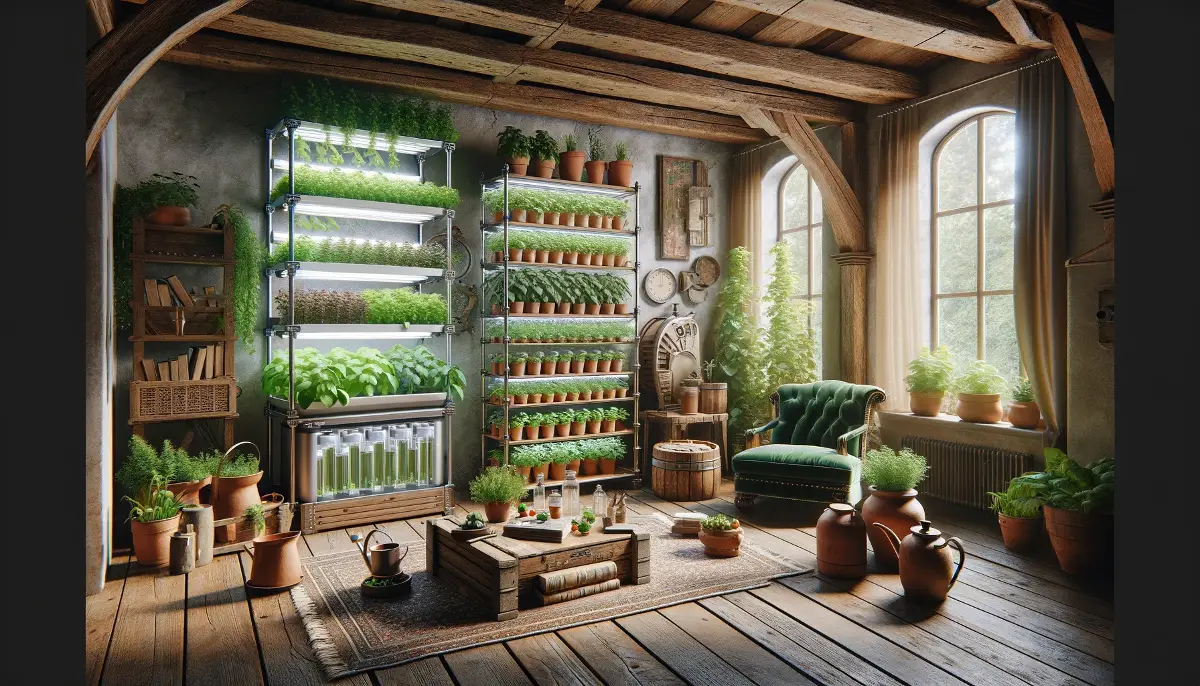
FAQs about Organic Indoor Gardening Systems
What’s the easiest system for beginners?
Hydroponic systems like the AeroGarden or simple DWC (Deep Water Culture) setups are ideal for beginners. They’re affordable, low-maintenance, and user-friendly.
Can I grow vegetables indoors?
Absolutely! Start with fast-growing veggies like cherry tomatoes, peppers, and spinach. They thrive in most indoor gardening setups.
What’s the best way to prevent pests indoors?
- Use organic pest control methods like neem oil or insecticidal soap.
- Keep your system clean and well-ventilated.
How much does it cost to start indoor gardening?
- Hydroponics: $150–$500, depending on the system.
- Container gardening: As little as $20 if you already have pots and soil.

